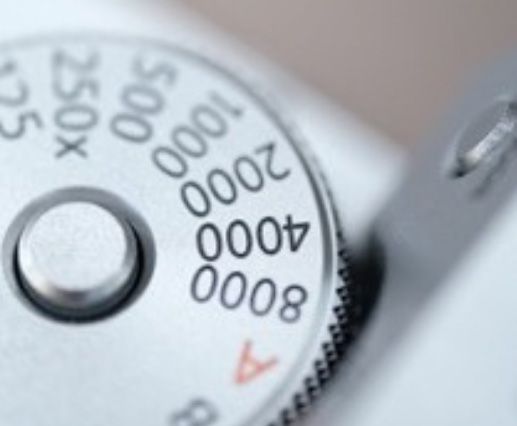The EOS Ra – A New Astrophotography Camera
This article was adapted from the original article here .
Canon expands the EOS R system with the launch of the EOS Ra camera, in late 2019. This is the industry's first full-frame, mirrorless camera dedicated to astrophotography (as of October, 2019). Based on the 30.3 million pixel EOS R camera, the EOS Ra has modifications which dedicate it to the astrophotography enthusiast.
The EOS Ra follows in a tradition of dedicated cameras for astrophotography from Canon:
- EOS 20Da
(introduced in 2005)
8.2 million pixels; APS-C sensor size; max. ISO 1600 (expandable to 3200 equivalent) - EOS 60Da
(introduced in 2012)
18 million pixels; APS-C sensor size; max. ISO 6400 (expandable to 12800 equivalent)
The EOS Ra is targeted at both terrestrial astrophotography users, and enthusiasts using medium sized equatorial telescopes. While standard DSLR and mirrorless cameras, of course, can be used for astrophotography, we’ll discuss the main features that optimize the EOS Ra for this challenging application.
EXPANDED TRANSMISSION FOR Hα WAVELENGTHS
The infrared-cutting filter (positioned immediately in front of the CMOS imaging sensor) is modified to permit approximately 4x as much transmission of hydrogen alpha rays at the 656nm wavelength, vs. standard EOS R cameras. This modification allows much higher transmission of deep red infrared rays emitted by nebulae, without requiring any other specialized optics or accessories.
This is very similar in concept to the previous astro-dedicated EOS camera models mentioned above. However, compared to the standard version of the EOS R, the EOS Ra’s roughly 4x greater transmission of these infrared wavelengths exceeds the (relative) infrared transmission of the EOS 20Da and 60Da cameras, according to Canon engineers.
The benefit is increased ability to record subtle details in the deep-red spectrum of nebulae, providing more vivid color and detail in these areas.
Because of this change in infrared filtration, with ordinary photographic subjects, unusual color balance or color rendering of some subjects may occur. In general, consider the EOS Ra a dedicated camera for astrophotography subjects, and not one recommended for everyday photographic use.
NEW: 30X MAGNIFICATION IN THE VIEWFINDER OR LCD SCREEN
The EOS Ra gives the choice of standard, full-frame viewing; 5x magnification, or 30x magnification – the first Canon EOS camera with 30x capability. The feature is there to provide users with a tool for extremely precise focusing upon small stars and other astro subjects.
Because EOS Ra is a mirrorless camera, its electronic eye-level viewfinder is also able to display this 30x magnification, along with its LCD screen for Live View operation.
(Please note that for remote operation via EOS Utility software, viewing on computer or mobile device screens, the 30x magnification feature is not possible.)
Animation - LCD screen for Live View operation
FULL-FRAME, MIRRORLESS, DEDICATED TO ASTROPHOTOGRAPHY — AN INDUSTRY FIRST
As of late October, 2019, the EOS Ra is the industry's first interchangeable lens, full-frame mirrorless camera specifically designed for astrophotography. Compared to the traditional digital SLR structure of Canon's previous EOS 20Da and 60Da cameras, there are new-found advantages for the serious astrophotography enthusiast with the EOS Ra:
- Full-frame sensor
Canon's first astro-dedicated camera with a full-frame image sensor. This is especially useful for wide-angle terrestrial photography of land and night skies, opening the door to many different lens options which provide true wide-angle coverage.Pixel size on this 30.3 million pixel sensor is a relatively large 5.36 microns square — an important consideration to serious astrophotography users — since smaller pixels tend to introduce more high ISO noise. With a smaller APS-C size image sensor, the previous Canon EOS 60Da (18 million pixels) had a smaller pixel size of approx. 4.3 microns square.
High ISO performance brings two advantages, vs. previous Canon astro-dedicated cameras: exceptional control of high ISO noise at settings typical in many astro situations (ISOs such as 1600 and 3200), and ability to extend high ISOs up to 40,000 when needed. The ability to access high ISOs can mean faster shutter speeds in some night sky situations, with less risk of blurs from shake, or star/planetary movement.
- Mirrorless design
First and foremost, the EOS Ra has the same large, electronic viewfinder as the standard EOS R camera. This alone brings tremendous advantages in low-light viewing, relative to the optical, eye-level viewfinders of previous EOS digital SLRs. This includes compatibility with the 5x/30x magnification feature, mentioned above. The EVF becomes a very useful alternative to viewing on the LCD screen, in part because it can minimize interference with a user’s night vision in dark environments.The EVF is a high-resolution, OLED design with 3.69 million pixel resolution (vs. approx. 2.1 million dot resolution for the camera’s LCD screen). This can mean even more night-sky detail, when viewing through the electronic, eye-level finder.
Silent Shutter operation activates entirely electronic first and second-curtain shutter operation, minimizing risk of vibration from mechanical shutter action in high-magnification, tripod-mounted situations.
- Canon Dual Pixel CMOS AF
Canon's excellent AF system is carried over to the EOS Ra camera. With its low-light sensitivity, and ability to perform AF (with many lenses) over 100% of the height x 88% of the width of full-frame images, achieving fast initial focus with RF and EF lenses is always an option for the night-sky photographer. - Canon RF lens mount
This opens the door to two outstanding lens systems: Canon’s dedicated RF lens series, and via an accessory lens mount adapter, over 70 choices in the Canon EF lens system. Canon engineers are excited by the possibilities of using many of the superb RF lenses in the challenging astrophotography environment, including wide-aperture lenses and L-series zooms. And with Canon EF lenses, mounted via one of three optional Canon lens mount adapters, users can expect the same excellent optical performance they’ve achieved for years with Canon EOS DSLRs.
OTHER EOS Ra FEATURES
While not specifically a result of the camera's mirrorless design, there are even more features that may be of interest to the serious astrophotography enthusiast. These include:
- Vari-angle LCD screen
Fully-articulated LCD screen, which can be especially helpful if the camera is mounted to telescopes. Another important advantage: easy shooting during vertical shooting — something often rather awkward on some competitive cameras with tilt-only rear screens. - Touch-screen operation
Most commands can be entered by simply touching the LCD screen, minimizing risk of subtle shake or camera movement that can occur from pressing buttons. - Multi-function Bar
This unique, touch-sensitive control on the back of the EOS R camera is carried-over to the specialized EOS Ra model. Users can set-up specific, frequently-used commands, and with a touch of either side of the bar, or a swipe along its surface, make setting changes — again, with less risk of camera movement or shake than by pressing conventional buttons. - 4K video and 4K Time Lapse shooting
EOS Ra opens the door to 4K video recording, at up to 30 fps, and at ISOs reaching 12800. Even more attractive for some users is the availability of 4K Time Lapse recording, in camera. A finished, 4K resolution 4K video file can be assembled from individual images, taken at user-defined intervals from 2 seconds~99 hours, 59 minutes, 59 seconds. - Up to 7 hours of long-exposure battery life
During extended, long exposures, EOS Ra can provide up to 7 hours of exposure time with a single, fully-charged Canon LP-E6N battery. Two accessories for power-management with long exposure times:- Battery Grip BG-E22
Optional accessory Battery Grip, dedicated for both the EOS R and EOS Ra cameras. When two Canon LP-E6N batteries are installed, users have up to 14 hours of potential long-exposure capability. - AC Adapter AC-E6N + DC Coupler DR-E6
An AC power adapter kit, to by-pass battery power, and use available AC power instead. These are likewise optional accessories, possibly of great interest to users who shoot large quantities of deep sky images.
- Battery Grip BG-E22
The EOS Ra will be a limited-production camera, expanding the EOS R-series in the direction of the serious astrophotography enthusiast. Its full-frame, 30.3 million pixel sensor and expanded sensitivity to Hydrogen α wavelengths should dovetail nicely into the needs of these users, and its RF mount means that the superb Canon RF lens series can now be used for this demanding type of imagery. Along with that, its mirrorless structure brings added benefits, such as the option for totally silent, and near vibration-free shooting, a great electronic viewfinder (and ability to magnify in the EVF or LCD screen up to 30x), and the excellent Canon Dual Pixel CMOS AF system for those times where autofocus is desired. For Canon users who have ventured into the fascinating field of dark sky or terrestrial night sky photography, this is certainly a camera worth investigating.
More Blog Posts


Useful Links
All Prices, specifications, and images are subject to change without notice. Not responsible for typographical or illustrative errors.
All manufacturer rebates, terms, conditions, and expiration dates are subject to manufacturers printed forms.
Art's Cameras Plus. All Rights Reserved



